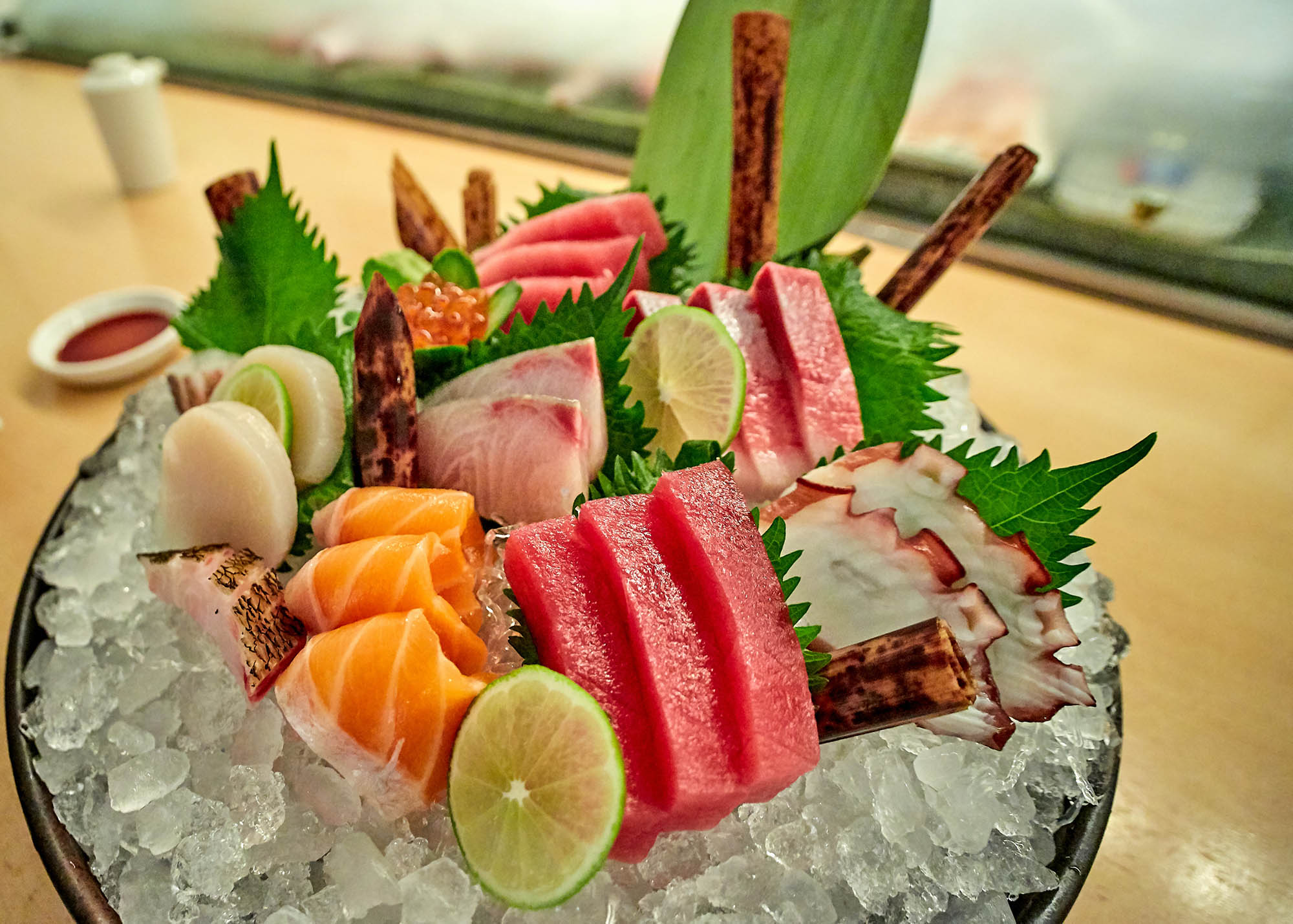Introduction: Understanding the Mastery of Sushi
Starting your journey of sushi creation requires a deep understanding of the intricacies involved in selecting the finest sushi grade fish and skillfully cutting sashimi. With precision and dedication, one can take raw fish and transform it into delicate slices of culinary masterpieces. This guide will illuminate the path to selecting the proper sushi grade fish and mastering the art of sashimi preparation. Prepare yourself for an adventure like no other!
1. The Quest for Sushi Grade Fish: Ensuring Optimal Quality
It's a bit obvious to us, but most people don't realize the secret to exceptional sushi lies in the quality of the fish used. To select sushi grade fish that guarantees both safety and flavor, follow these guidelines:
- Choose a reputable seafood market or fishmonger renowned for their commitment to quality. Here at Riviera Seafood Club, we inspect and prepare every fish to make sure it meets our expectations of what it means to be sushi or even sashimi grade fish.
- Inspect the fish's appearance: look for bright, clear eyes, shiny skin, and a firm texture.
- Check for proper handling and storage to maintain freshness.
- Opt for fish that has been properly frozen to eliminate the risk of parasites. However, freezing fish in conventional freezers is a slow process and can degrade the structural quality of the cells, and can ruin the texture of the seafood. Instead, we "superfreeze" our seafood which is a much faster process that helps maintain the quality of our seafood.
Remember, meticulous attention to detail is paramount when it comes to selecting sushi grade fish. A harmonious marriage of quality and safety will elevate your sushi experience to unparalleled heights.
2. The Art of Cutting Sashimi: A Symphony of Precision
Once you have acquired the finest sushi grade fish, it is time to embark on the meticulous process of cutting sashimi. The following steps will guide you towards mastering the art of precise sashimi preparation:
A. Honing Knife Skills: A Cut Above the Rest
A well-sharpened knife is the instrument of choice for achieving flawless sashimi slices. The blade's sharpness ensures clean, smooth cuts without crushing or tearing the fish. Remember to sharpen your knife prior to slicing for optimal results.
B. Sashimi Cutting Techniques: The Symphony Unfolds
Various cutting techniques contribute to the artful presentation of sashimi. Familiarize yourself with the following cuts:
1. Hira-zukuri (Flat Slices)
These rectangular slices are ideal for sashimi platters, showcasing the vibrant colors and textures of the fish. To achieve this cut:
- Hold the knife at a slight angle and cut diagonally AGAINST the grain of the fish.
- Make sure to maintain uniform thickness on each cut for a visually pleasing display.
2. Usuzukuri (Thin Slices)
Delicate and translucent, usuzukuri slices epitomize elegance. Follow these steps to create this ethereal cut:
- Hold the knife at a steeper angle and slice the fish as thinly as possible.
- Employ a gentle sawing motion to achieve near-transparency in each slice.
3. Tataki (Seared Slices)
Tataki, characterized by its seared exterior and tender interior, adds a delightful twist to sashimi. Master this technique:
- Quickly sear the fish's surface using a blowtorch or a hot pan.
- Slice the fish into thin pieces, revealing the striking contrast between the seared exterior and the luscious interior.
C. Enhancing the Presentation: The Final Step
Elevate your sashimi presentation to awe-inspiring levels with these expert tips:
- Arrange the slices on a pristine white platter to highlight the vibrant colors of the fish.
- Add complementary garnishes such as shredded daikon radish, microgreens, or edible flowers for an artistic touch.
- Accompany your sashimi with soy sauce, authentic Japanese wasabi, and pickled ginger to provide a traditional and harmonious flavor profile.
FAQs (Fishy Inquiries)
Q: Can any type of fish be used for sushi?
A: Sushi requires specific fish types that are safe for raw consumption. Look for sushi grade fish, handled and stored according to rigorous standards, to ensure the best results. Have questions? Feel free to contact us about which seafood we highly recommend for sushi!
Q: How long can sushi grade fish be stored?
A: Sushi grade fish is highly perishable. Consume it as soon as possible for optimal freshness and flavor. If storage is necessary, tightly wrap the fish in plastic wrap and store it in the coldest section of your refrigerator. Aim to consume it within 24 hours.
Q: Is it possible to freeze sushi grade fish?
A: Yes, freezing fish is a viable option to ensure safety. By subjecting the fish to temperatures of -4°F or -20°C, parasites can be eliminated. However, proper thawing techniques must be employed before utilizing the fish for sushi preparation. We "superfreeze" many of our seafood, which not only helps with eliminating parasites, but also maintains the quality of our fish due to the rapid freezing process.
Conclusion: The Mastery Unveiled
Congratulations on your journey into the realm of selecting sushi grade fish and skillfully cutting sashimi. Armed with the knowledge of sourcing impeccable ingredients and wielding a sharp knife with finesse, you are ready to orchestrate a symphony of flavors. Prepare to indulge in the artistry of sushi, one precise slice at a time. Your dedication to perfection will undoubtedly leave diners in awe, their palates forever yearning for the divine taste of well-prepared sashimi. Embrace the mastery and continue to explore the limitless possibilities of sushi craftsmanship.

